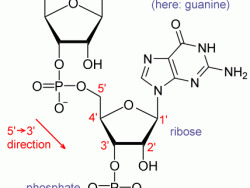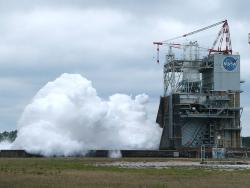This rocket propulsion test complex was created to flight-certify all first and second stages of the Apollo Saturn V rocket. The first test-firing occurred on April 23, 1966. Subsequent to the Apollo Program, these test stands were modified to support the testing requirements of the Space Shuttle Main Engine. Every astronaut who traveled to the moon aboard Saturn V Rockets and into space aboard the Space Shuttle, did so on rocket stages and engines that were first proven flight-worthy on these test stands.
1961


In 1961, in the National Institutes of Health Headquarters (Bethesda, MD), Marshall Nirenberg and Heinrich Matthaei discovered the key to breaking the genetic code when they conducted an experiment using a synthetic RNA chain of multiple units of uracil to instruct a chain of amino acids to add phenylalanine. The uracil (poly-U) served as a messenger directing protein synthesis. This experiment demonstrated that messenger RNA transcribes genetic information from DNA, regulating the assembly of amino acids into complex proteins.
Innovations

In 1961, in the National Institutes of Health Headquarters (Bethesda, MD), Marshall Nirenberg and Heinrich Matthaei discovered the key to breaking the genetic code when they conducted an experiment using a synthetic RNA chain of multiple units of uracil to instruct a chain of amino acids to add…
Read More
This rocket propulsion test complex was created to flight-certify all first and second stages of the Apollo Saturn V rocket. The first test-firing occurred on April 23, 1966. Subsequent to the Apollo Program, these test stands were modified to support the testing requirements of the…
Read More

